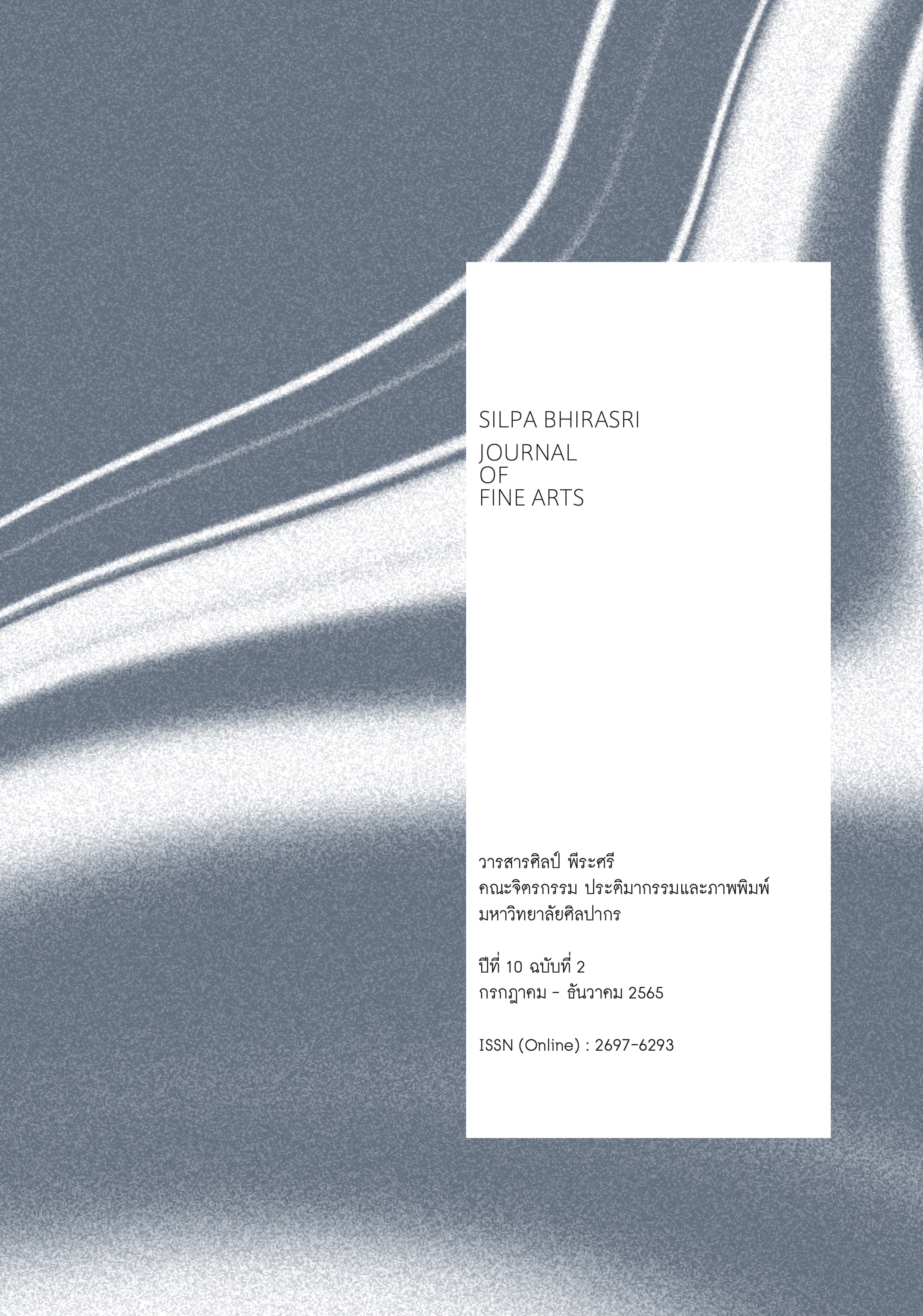From White Painting to Silent Piece
interaction between concepts and inspiration of art and music
DOI:
https://doi.org/10.69598/sbjfa258434Keywords:
Transparency , Silence, Noise, John Cage, Robert RauschenbergAbstract
After the release of 4’ 33 or Silence Piece by John Cage in 1952, all sound in music, not only tune but also noise, has been counted significant. Like art, which is not considered a representation of reality or beauty, music composition is then not created for pleasure any more.
This journal aims to reveal concept of transparency, which creates philosophical meaning in the work 4 ’33 like the silence originated in abstraction in cubism art and substantially developed in modern architecture. The concept was then adapted in music 4 ’33 by John Cage, who was inspired by Robert Rauschenberg’s White Painting (1951). The research here is done by surveying the concept and production of White Painting, interview with Cage and his explication. The analysis of Cage’s and Rauschenberg’s works revealed close relationship between music and art, which was created through absolute interaction of philosophical, religious, art and music concepts and expressions in the temporary period of the creation.
The result suggests that the concept of Cage influenced by Eastern philosophy and Buddhism, such as self – deprecation and prejudice reduction, results in the process of embracing things to create one’s identity or blending oneself with things. Consequently, there is an absent of borders between beauty and crudeness, or tune and noise. Moreover, unintentional enterprise in the creativity of painting and music encourages the audiences to concern about other things beyond the music notes and elements of paintings. Most of all, they absolutely realise harmony of the antithesis, the basis of contemporary art and music, which is more essential than beautiful pictures or sound.
Downloads
References
ชัยยศ อิษฎ์วรพันธุ์. (2564). “กำเนิดของสวนธรรมชาติและสวนทิวทัศน์แห้งและความสัมพันธ์กับสถาปัตยกรรมและจิตรกรรม” วารสารศิลป์ พีระศรี, 9(1). 19-60.
_________. (2565). สัมภาษณ์. เชียงใหม่: วันที่ 4 กันยายน 2565
ณัชชา พันธุ์เจริญ. (2564). พจนานุกรม ศัพท์ดุริยางคศิลป์. กรุงเทพมหานคร: ธนาเพรส.
โรว์, โคลิน และ สลัทสกี้, โรเบิร์ต. (2559). ความปรุโปร่ง. แปลโดย อาชัญญ์ บุญญานันต์. กรุงเทพมหานคร: ลายเส้น.
อติภพ ภัทรเดชไพศาล. (2560). เสียงของศตวรรษ: สังเขปแนวคิดและเทคนิคของ 10 นักแต่งเพลงสมัยใหม่. กรุงเทพมหานคร: ภาพพิมพ์.
Cage, J. (2013). Silence 50th Anniversary Edition. Hanover: Wesleyan University Press.
Furlong, W. (2010). Speaking of Art: Four decades of art in Conversation. China: Phaidon Press.
Isavorapant, Chaiyosh. (2021). “The Origin of Natural and Dry Landscape Garden and the Relationship with Architecture and Painting” Silpa Bhirasri Journal of Fine Arts, 9(1). 19-60.
_________. (2022). Interview. Chiang Mai: September 4, 2022
Joseph, B. W. (2003). Random Order: Robert Rauschenberg and The Neo-Avant-Garde. London, England: The MIT Press.
Kotz, M. L. (2004) Rauschenber / Art And Life New Edition. China: Abrams.
Pancharoen, Natchar. (2021). Music Dictionary. Bangkok: Thana Press.
Pataradetpisan, Atibhop. (2017). Sound of the Century: A brief Concept and Technique of 10 Modern Composers. Bangkok: Phapphim.
Rowe, Colin and Slutzky. (2016). Transparency. Translate by Archan Boonyanan. Bangkok: Li-Zeen.
San Francisco Museum of Modern Art. (2022). Rauschenberg Research Project. Retrieved from https://www.sfmoma.org/artwork/98.308.A-C/essay/white-painting-three-panel/
Downloads
Published
How to Cite
Issue
Section
License
The journal's editorial team does not have to agree with the views and comments in the author's article, nor are they responsible for the comments.












